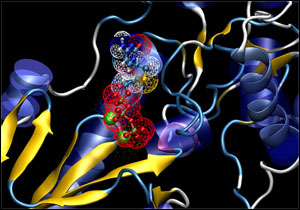
Lamivudine bound in HBV polymerase
Cross Drug Resistance
- As the number of drugs available increase, the cross resistance profile of the virus increases significantly as virus mutates, making the correct selection of drug at the right time increasingly important to reduce drug burnout
- Indications of emergence of drug-resistant virus
- Increasing viral load (≥ 1.0 log IU/ml)
- Identification of known genotypic markers of drug resistance within viral polymerase:
- Primary resistance mutations
- Secondary/compensatory mutations
- Increasing serum ALT levels
- Clinical deterioration
- A primary drug resistance mutation causes:
- an amino acid substitution that results in reduced susceptibility to an antiviral agent
- Secondary (compensatory) mutations cause:
- an amino acid substitution that compensates for functional defects associated with primary drug resistance
- For those patients suffering from cross resistance HBV, SeqHepB can identify nucleoside analogue-resistance pathways and characterize the HBV codon changes as primary and/or secondary mutations that can affect subsequent treatment with nucleoside analogues
- In terms of mutation, HBV is not limited to point mutations but also has insertions and/or deletions causing mutational resistance
All material copyright Evivar Medical Pty. Ltd. All rights reserved